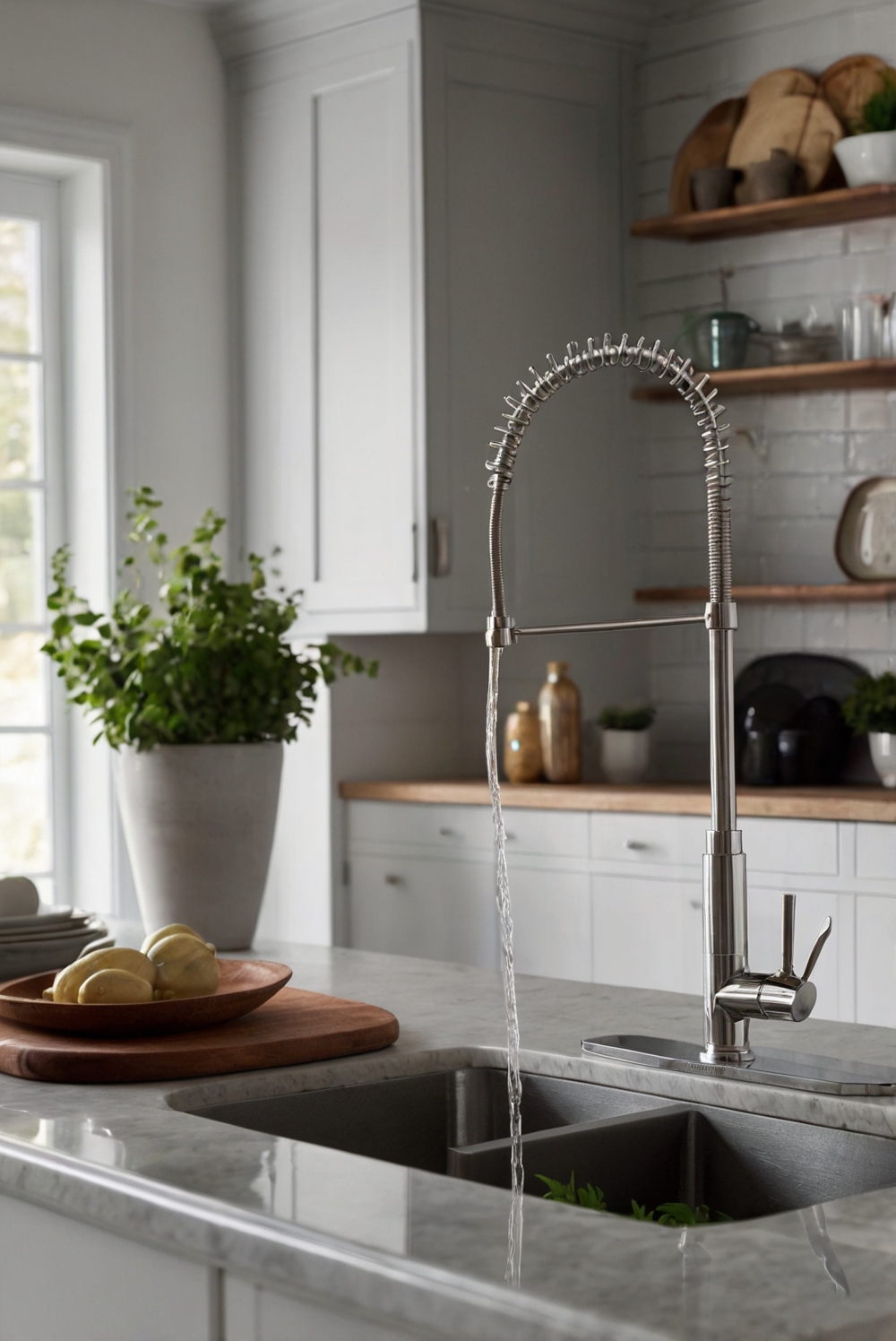Welcome to the daily interior designer routine! Today, learn how to easily install a kitchen faucet yourself, saving time and money in your home decor projects.
**
How to install a kitchen faucet yourself?
**
**
How to install a kitchen faucet yourself?
**
To install a kitchen faucet yourself, start by gathering the necessary tools and materials including the new faucet, plumber’s tape, adjustable wrench, and a bucket. Turn off the water supply to the sink before removing the old faucet. Follow the manufacturer’s instructions to install the new faucet and make sure to use plumber’s tape to prevent leaks.
Be cautious of any hidden plumbing issues or leaks that may require professional help. Once the installation is complete, test the faucet for proper functionality before using it regularly. Following these steps will help you save money on professional installation and give you a sense of accomplishment in your home decorating projects.
What are the important steps to install a kitchen faucet yourself?
When installing a kitchen faucet yourself, it is crucial to follow a set of important steps to ensure a successful installation. Begin by turning off the water supply to the faucet. This can usually be done by locating the shut-off valves under the sink and turning them clockwise to close. Next, disconnect the old faucet by removing any nuts or bolts that are holding it in place. Once the old faucet is removed, clean the area where the new faucet will be installed to ensure a proper seal.
What tools are required for installing a kitchen faucet?
Before starting the installation process, make sure you have all the necessary tools on hand. Some of the tools you will need include an adjustable wrench, pliers, a basin wrench, plumber’s tape, and a bucket or towels to catch any water that may leak during the installation process. It is also helpful to have a flashlight on hand to provide additional light in the often dark space under the sink.
What are some important tips to keep in mind while installing a kitchen faucet?
When installing a kitchen faucet yourself, there are several important tips to keep in mind. First, carefully read the manufacturer’s instructions that come with the faucet to ensure you are following the correct installation process. It is also important to double-check all connections to make sure they are secure and leak-free before turning the water supply back on. Additionally, take your time during the installation process and do not rush, as this can lead to mistakes that may cause issues down the line.
What are the benefits of installing a kitchen faucet yourself?
One of the main benefits of installing a kitchen faucet yourself is the cost savings. Hiring a professional plumber to install a faucet can be expensive, so by doing it yourself, you can save money. Additionally, installing a faucet yourself gives you a sense of accomplishment and allows you to learn more about your home’s plumbing system. You also have the flexibility to choose the exact faucet you want and can install it at a time that is convenient for you.
What are the common mistakes to avoid when installing a kitchen faucet yourself?
While installing a kitchen faucet yourself can be a rewarding experience, there are some common mistakes to avoid. One of the most important things to remember is to turn off the water supply before starting the installation process. Failing to do so can lead to water damage and potential flooding. Additionally, make sure to carefully read the manufacturer’s instructions and follow them step by step to ensure a successful installation. Finally, do not overtighten any connections, as this can cause damage to the faucet or plumbing components.
1. How do I prepare for installing a kitchen faucet myself?
Before starting the installation process, gather all the necessary tools and materials, such as an adjustable wrench, plumber’s tape, and a bucket to catch any water. Make sure to turn off the water supply to the faucet and clear out the area under the sink for easy access. Additionally, read the manufacturer’s instructions carefully to familiarize yourself with the installation steps.
2. What are the steps involved in installing a kitchen faucet yourself?
To install a kitchen faucet, start by removing the old faucet, cleaning the area, and installing the new faucet according to the manufacturer’s instructions. Connect the water supply lines and check for any leaks before securing the faucet in place. Finally, test the faucet to ensure it is working properly.
3. Do I need any special tools to install a kitchen faucet myself?
While installing a kitchen faucet, you may need a few basic tools like an adjustable wrench, screwdriver, and plumber’s tape. These tools will help you remove the old faucet and install the new one securely. It’s also essential to have a bucket or container to catch any water that may leak during the installation process.
4. How long does it take to install a kitchen faucet yourself?
The time it takes to install a kitchen faucet yourself may vary depending on your experience and the complexity of the faucet. On average, it can take anywhere from 30 minutes to a few hours to complete the installation process. It’s crucial to take your time and follow the manufacturer’s instructions carefully to ensure a successful installation.
5. What are some common challenges when installing a kitchen faucet yourself?
Some common challenges you may encounter when installing a kitchen faucet yourself include dealing with tight spaces under the sink, ensuring a secure connection of water supply lines, and avoiding leaks. It’s essential to be patient and carefully follow the installation steps to overcome these challenges and successfully install the kitchen faucet. If you encounter any difficulties, don’t hesitate to seek help from a professional plumber.




